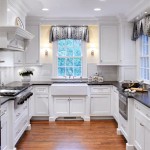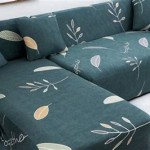Craftsman Style Interior Decorating for Kitchens
The Craftsman style, a prominent movement in American architecture and design from the late 19th and early 20th centuries, emphasizes simplicity, functionality, and natural materials. In kitchen design, this translates to a warm, inviting space that prioritizes handcrafted details and a connection to the outdoors. Achieving a Craftsman-style kitchen requires careful consideration of various elements, from cabinetry and countertops to lighting and hardware.
This article will explore the key features of Craftsman-style kitchen design, providing insights into how to incorporate these elements into a modern home while staying true to the core principles of the movement. Emphasis will be placed on the use of natural materials, thoughtful layouts, and the integration of handcrafted details that define the Craftsman aesthetic.
Cabinets: The Cornerstone of Craftsman Kitchens
Cabinetry is arguably the most important element in establishing a Craftsman-style kitchen. Characterized by clean lines, simple designs, and robust construction, Craftsman cabinets are typically made from solid wood, such as oak, cherry, or maple. These hardwoods not only provide durability but also showcase the natural grain patterns that are integral to the style. Flat-panel doors, often with a subtle shaker profile, are a hallmark of Craftsman cabinetry. Avoid overly ornate carvings or intricate details that clash with the movement's emphasis on simplicity.
The finish of the cabinets is also crucial. Stained finishes, rather than painted ones, are generally preferred to highlight the natural beauty of the wood. Common stain colors range from warm honey tones to deeper browns and even reddish hues, depending on the desired look and the type of wood used. A clear coat or a low-sheen sealant is often applied to protect the wood and enhance its natural luster.
Consider incorporating features such as exposed joinery or hand-hammered hardware to further enhance the handcrafted feel of the cabinets. Details like dovetail joints or mortise-and-tenon construction, although often subtle, contribute to the overall sense of quality and authenticity. Glass-front cabinets, particularly those with leaded glass or mullion designs, can also add visual interest and provide a display space for decorative items.
To maximize storage space, consider incorporating features such as pull-out shelves, drawer dividers, and vertical storage solutions. These elements not only improve the functionality of the kitchen but also help to maintain a clean and organized appearance, which is in line with the Craftsman aesthetic.
Countertops and Backsplashes: Balancing Functionality and Beauty
The choice of countertops and backsplashes plays a significant role in complementing the Craftsman style. Natural materials are once again the preferred option, with granite, soapstone, and butcher block being popular choices for countertops. These materials offer durability, visual appeal, and a connection to the natural world. Granite, with its unique variations in color and pattern, provides a sense of richness and sophistication. Soapstone, with its smooth, matte finish, offers a more understated and classic look. Butcher block, made from solid wood, adds warmth and texture to the kitchen.
When selecting a countertop material, consider its durability, maintenance requirements, and compatibility with the overall design scheme. Granite is highly resistant to heat and scratches, making it a practical choice for high-traffic areas. Soapstone is also relatively durable and develops a beautiful patina over time. Butcher block requires more maintenance, such as regular oiling, to prevent drying and cracking. However, its warm, natural aesthetic makes it a worthwhile option for those who appreciate the beauty of wood.
For backsplashes, subway tiles, particularly those in earthy tones or muted colors, are a classic choice for Craftsman kitchens. Consider using handcrafted tiles with subtle variations in texture and color to add visual interest. Alternatively, you can opt for a simple, solid-color backsplash made from natural stone or ceramic. Avoid overly elaborate or modern designs that clash with the Craftsman aesthetic.
Incorporating elements such as a tiled backsplash with a decorative border or a mosaic accent can add a touch of personality and visual appeal. However, it's important to maintain a sense of balance and restraint to avoid overwhelming the space. Choose a design that complements the overall style of the kitchen and enhances its handcrafted feel.
Lighting and Hardware: Essential Finishing Touches
Lighting and hardware are often overlooked but play a crucial role in completing the Craftsman-style kitchen. Lighting fixtures should be both functional and aesthetically pleasing, providing ample illumination while complementing the overall design. Pendant lights with frosted glass shades or metal fixtures are a popular choice for illuminating kitchen islands and countertops. Recessed lighting can be used to provide general illumination, while under-cabinet lighting can enhance task lighting and highlight the backsplash.
Consider using warm-toned LED bulbs to create a welcoming and inviting atmosphere. Avoid overly bright or harsh lighting that can detract from the warmth and charm of the Craftsman style. Dimmers can be installed to adjust the lighting levels according to the time of day and the desired mood.
Hardware, such as cabinet pulls, knobs, and hinges, should be chosen to complement the cabinetry and overall design scheme. Oil-rubbed bronze, antique brass, and brushed nickel are popular choices for Craftsman kitchens. These finishes offer a timeless and classic look that complements the natural materials used throughout the space.
Consider using handcrafted hardware with subtle details, such as hammered textures or simple geometric patterns. These details can add a touch of personality and enhance the handcrafted feel of the kitchen. Avoid overly ornate or modern hardware that clashes with the Craftsman aesthetic.
Beyond the practical considerations of lighting and hardware, these elements also contribute to the overall sense of craftsmanship and attention to detail that defines the Craftsman style. By carefully selecting these finishing touches, one can create a kitchen that is both functional and beautiful.
In addition to these core elements, other details can further enhance the Craftsman aesthetic in a kitchen. Exposed beams, wainscoting, and natural wood trim can add architectural interest and visual warmth. Incorporating vintage-inspired appliances or decorative elements, such as pottery or handcrafted artwork, can also contribute to the overall sense of authenticity and charm.
Ultimately, achieving a successful Craftsman-style kitchen requires a thoughtful and cohesive approach to design. By carefully selecting materials, finishes, and details, one can create a space that is both functional and beautiful, while staying true to the core principles of the Craftsman movement: simplicity, functionality, and a connection to the natural world.
The careful selection of these elements such as color palettes, window treatments, and floorings can enhance the style. Earth tone color palettes such as greens, browns, and creams can bring nature into the house and these were traditional choice for Craftsman Kitchens. Simple window treatments with natural materials should be considered such as cotton or linen drapes. Finally, hardwood floors or tiles that mimic natural stone should be consider for flooring.

How To Design A Craftsman Style Kitchen Academy Marble Ct Ny

A Dreamy Craftsman Cottage Kitchen Style Decoratin

Your Ultimate Guide To The Craftsman Style Kitchen

Top Beautiful Atlanta Craftsman Kitchen Remodel Ideas

30 Charming Craftsman Kitchen Ideas Cabinet Kings

Kitchen Workbook 8 Elements Of A Craftsman

Decorating Ideas For Craftsman Style Homes Riverbend Home

30 Charming Craftsman Kitchen Ideas Cabinet Kings

6 Elements Of A Craftsman Style Kitchen

Get Ready To Fall In Love With A Modern Craftsman Home Town Country Living
Related Posts







